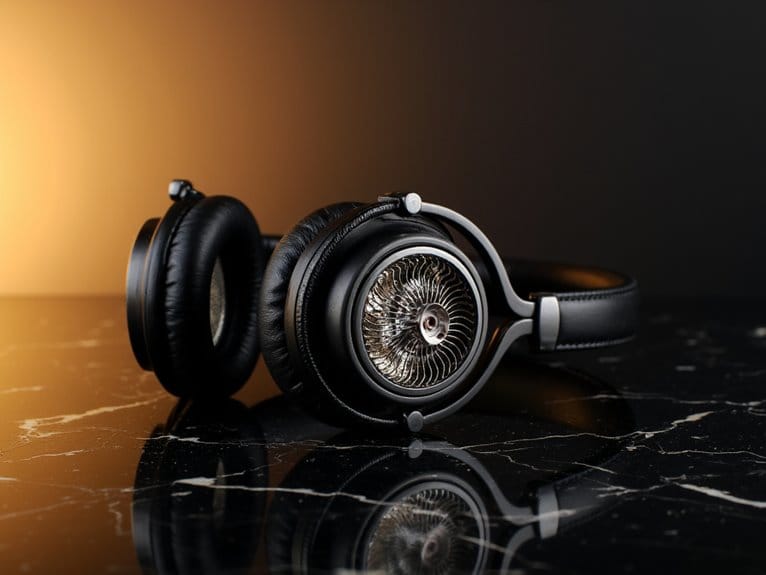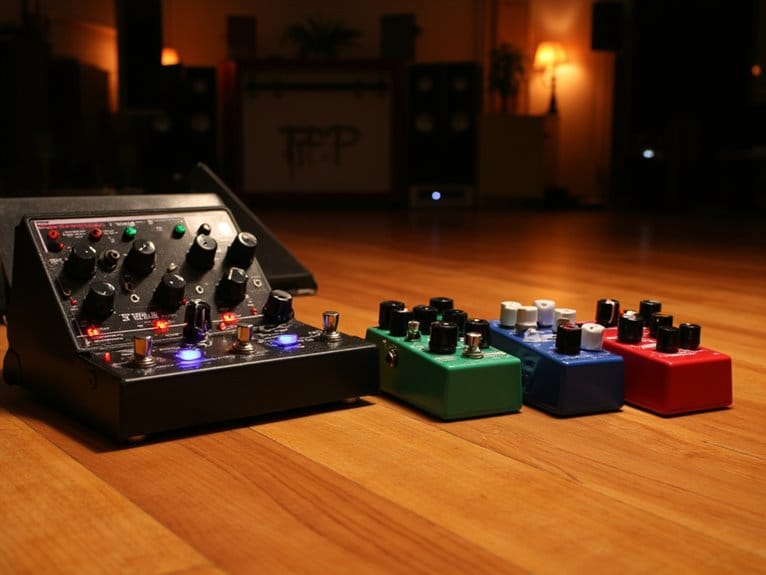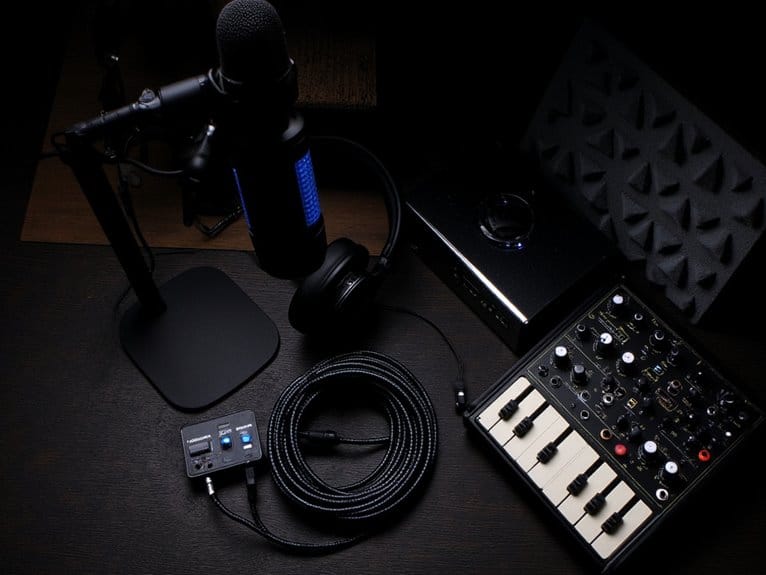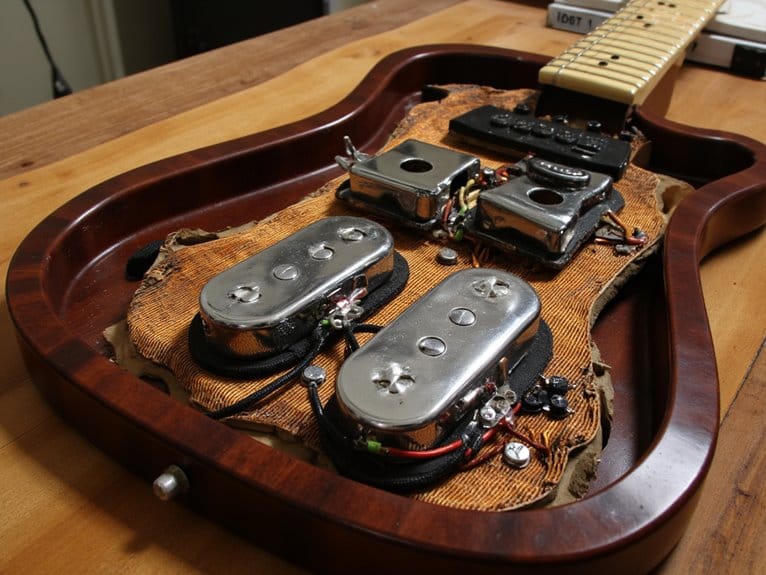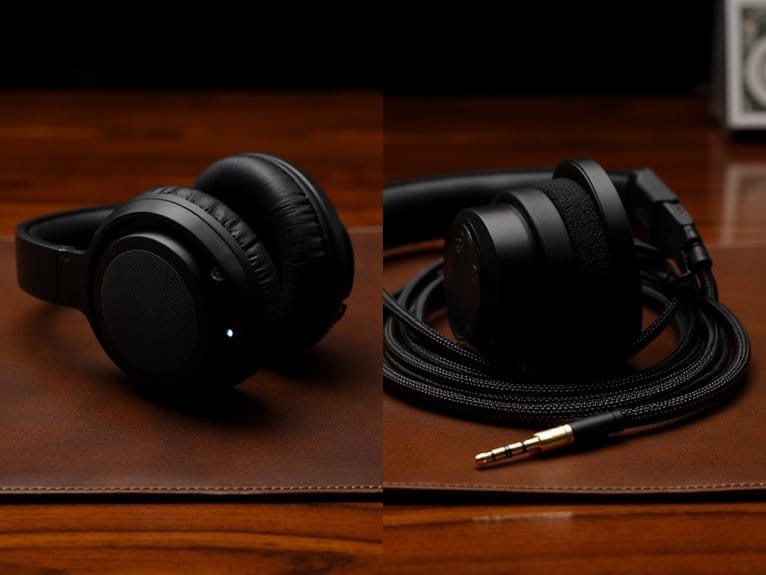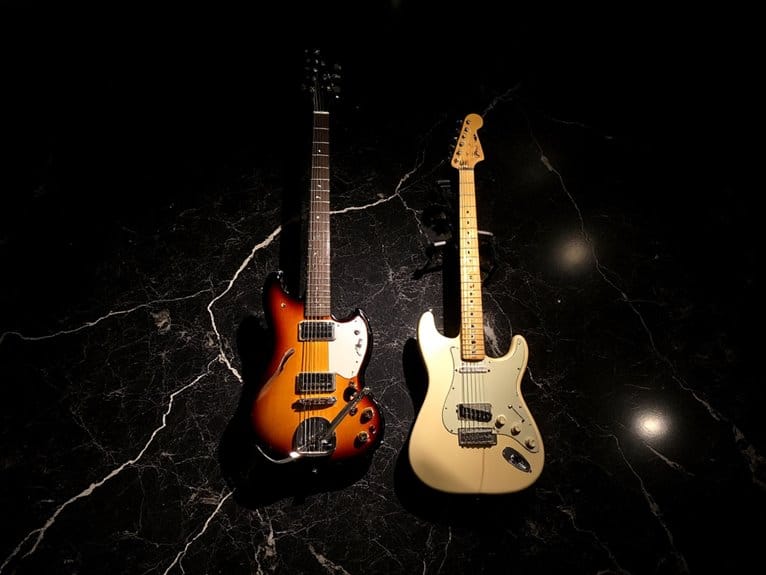Understanding Headphone Soundstage and Imaging
Your headphones create spatial audio through soundstage, which establishes the perceived three-dimensional acoustic environment’s width and depth, and imaging, which pinpoints exactly where individual instruments appear within that space. Unlike speakers that use multiple drivers around a room, headphones rely on digital processing and driver technology to simulate 360-degree placement. Open-back designs typically deliver broader soundstages while closed-back models prioritize isolation over spatial performance, and understanding these mechanics reveals why certain models excel at creating convincing auditory illusions.
We are supported by our audience. When you purchase through links on our site, we may earn an affiliate commission, at no extra cost for you. Learn more.
Notable Insights
- Soundstage creates the three-dimensional acoustic environment while imaging determines the precise positioning of individual instruments within that space.
- Open-back headphones provide superior soundstage with expansive, natural sound but sacrifice noise isolation compared to closed-back designs.
- Driver technology significantly impacts spatial performance, with planar magnetic excelling in precision and electrostatic offering exceptional detail.
- Headphones achieve spatial audio through digital signal processing and channel isolation, unlike speakers which use multiple room-positioned drivers.
- Key challenges include latency in wireless transmission, HRTF variability due to unique ear shapes, and limited spatial audio content availability.
What Are Soundstage and Imaging in Headphones?
Immersion-that’s what separates a truly exceptional headphone experience from simply hearing music through tiny speakers strapped to your ears.
When you’re evaluating headphones, you’ll encounter two critical spatial audio concepts that determine how realistic your listening experience feels. The soundstage definition encompasses the perceived three-dimensional acoustic environment your headphones create, establishing the width, depth, and overall spatial framework where music exists around you.
Meanwhile, the imaging explanation focuses on pinpoint accuracy-how precisely individual instruments, vocals, and sound effects are positioned within that spatial framework. Unlike speakers that benefit from room crosstalk between channels, headphones create channel isolation that limits sound perception to each respective ear.
Think of soundstage as the concert hall itself, while imaging represents the exact chair where each musician sits. The shape and resonances of your pinna significantly influence how accurately you can localize sounds within this spatial framework. Together, these elements transform flat audio into a convincing, immersive soundscape that makes you forget you’re wearing headphones.
How Headphone Spatial Audio Differs From Speakers
Now that we’ve established what soundstage and imaging mean for your listening experience, it’s worth examining how headphones achieve these spatial effects compared to traditional speaker setups-because the methods couldn’t be more different. Headphones create a sense of space and directionality through advanced engineering techniques, such as the use of drivers that replicate the way sound waves interact with your ears. Conversely, speaker setups rely on the physical distance between the speakers and the listener to create a natural soundstage. For enthusiasts, understanding these differences often leads to curiosity about how they can optimize their audio experience, prompting discussions about “headphone burnin explained” and its impact on sound quality.
While speakers use multiple physical drivers positioned around your room to create surround sound, headphones rely on sophisticated digital signal processing and head-related transfer functions to simulate three-dimensional sound placement directly at your ears.
This gives headphones a unique advantage in audio immersion, as they can precisely position sounds in a full 360-degree sphere, including above and below you, rather than being limited to horizontal plane positioning like most speaker arrangements.
Premium models like the Apple AirPods Max feature dynamic head tracking that adjusts the spatial audio in real-time as you move your head, creating an even more convincing three-dimensional soundscape.
The trade-off involves artificial spatial cues versus natural acoustic interaction. Most quality headphones utilize 40mm dynamic drivers or dual-diaphragm configurations to deliver the precise frequency response needed for convincing spatial audio reproduction. These designs ensure that listeners can discern subtle details in their audio experience, enhancing immersion and clarity. Furthermore, studio quality headphones are essential for professionals who require accurate sound representation during mixing and mastering sessions. By effectively balancing spatial cues and acoustic interaction, these headphones elevate the overall listening experience to new heights.
Key Factors That Shape Your Headphone’s Spatial Performance
When you’re evaluating headphones for spatial performance, three fundamental design elements will determine whether you’ll experience that coveted three-dimensional soundscape or find yourself stuck with flat, congested audio.
The driver technology inside your headphones, whether they feature an open or closed design, and any digital signal processing working behind the scenes all interact in complex ways that directly impact how accurately sounds appear to move around your head.
I’ve tested hundreds of headphones over the years, and these core factors consistently separate the models that create convincing spatial illusions from those that simply reproduce left and right channels without any sense of dimensional depth. Driver size plays a crucial role in this separation, with larger drivers typically offering better frequency separation that enhances spatial positioning.
Professional models like the Beyerdynamic DT 990 Pro demonstrate how open-back design creates natural sound reproduction and enhanced spatial awareness compared to their closed-back counterparts.
Open-Back Vs Closed-Back Design Effects on Spatial Reproduction
When you’re choosing headphones for spatial audio reproduction, the fundamental design difference between open-back and closed-back constructions creates dramatically different soundstage experiences that’ll shape how you perceive music’s dimensional qualities.
Open-back headphones deliver that wide, natural soundstage you’re seeking, with perforated ear cups allowing air movement and sound escape, which simulates room-like acoustics and positions instruments around you rather than cramming everything inside your head.
Closed-back designs, while offering superior isolation and focused sound delivery, inherently limit spatial openness due to their sealed construction, creating a more intimate but confined listening environment that can feel artificially constrained compared to their open counterparts.
Open-Back Soundstage Advantages
The fundamental difference between open-back and closed-back headphone designs lies in their acoustic architecture, and I’ve found that open-back models consistently deliver superior soundstage performance through their unrestricted driver movement and natural sound propagation.
You’ll experience a broad, expansive soundstage that extends well beyond your head’s physical boundaries, creating an immersive experience that rivals live performances.
The open design allows sound waves to pass freely through the ear cups, preventing internal reflections while enabling precise instrument placement within stereo mixes.
This natural sound reproduction helps you discern subtle positioning cues, from far-left guitar parts to distant backing vocals, while maintaining realistic sound decay patterns that contribute to three-dimensional audio perspective that audiophiles consistently prefer.
Closed-Back Spatial Limitations
While open-back headphones shine in spatial reproduction, I’ve consistently found that closed-back designs face inherent limitations that greatly impact their soundstage capabilities, creating a more confined listening experience that places sound directly inside your head rather than around it. The sealed ear cups, while providing excellent sound isolation, restrict natural airflow and spatial cues that contribute to expansive soundstage perception.
Their imaging accuracy suffers from internal reflections within the sealed chambers, which interfere with precise instrument placement and stereo positioning that mixing engineers depend on for critical listening sessions.
| Aspect | Closed-Back Reality | Impact on Experience |
|---|---|---|
| Soundstage Width | Narrow, confined | Intimate but limited |
| Depth Perception | Reduced spatial layers | Flattened audio landscape |
| Instrument Separation | Compressed positioning | Harder to distinguish placement |
| Bass Response | Enhanced, prominent | Masks subtle spatial details |
| Environmental Cues | Minimal room ambiance | Less natural presentation |
Frequently Asked Questions
Can You Improve Headphone Soundstage With EQ or Software Adjustments?
You can enhance headphone soundstage through EQ Techniques that improve clarity and separation, plus Software Solutions like virtual surround algorithms. However, you can’t exceed your headphones’ physical limitations for true spatial expansion.
Do Expensive Headphones Always Have Better Soundstage Than Budget Models?
No, expensive headphones don’t always guarantee better soundstage than budget models. While high end materials and advanced soundstage technology often improve spatial audio, you’ll find some budget headphones surprisingly compete with pricier options in imaging quality.
How Does Head Size and Ear Shape Affect Soundstage Perception?
Your ear anatomy directly influences sound perception by filtering frequencies differently. Larger heads create wider interaural distances, while unique ear shapes affect spatial cues. Headphones can’t accommodate everyone’s anatomy equally effectively.
Which Music Genres Benefit Most From Wide Soundstage Headphones?
You’ll find classical and orchestral music benefit most from wide soundstage headphones, delivering orchestral richness through instrument separation. Jazz enhancement comes from spatial positioning of complex arrangements, while acoustic genres appreciate the immersive, live-performance experience.
On a final note
Now that you’ve explored the intricate world of headphone soundstage and imaging, you’re equipped to make informed decisions about your next audio investment. Whether you’re prioritizing wide soundstage for orchestral recordings or precise imaging for competitive gaming, remember that driver technology, housing design, and your personal preferences all play essential roles. Happy listening, and don’t forget to trust your ears above all else.

